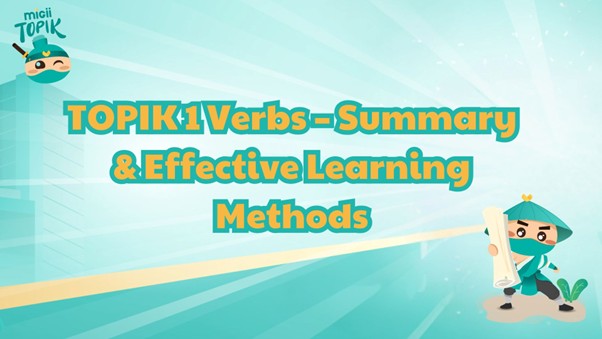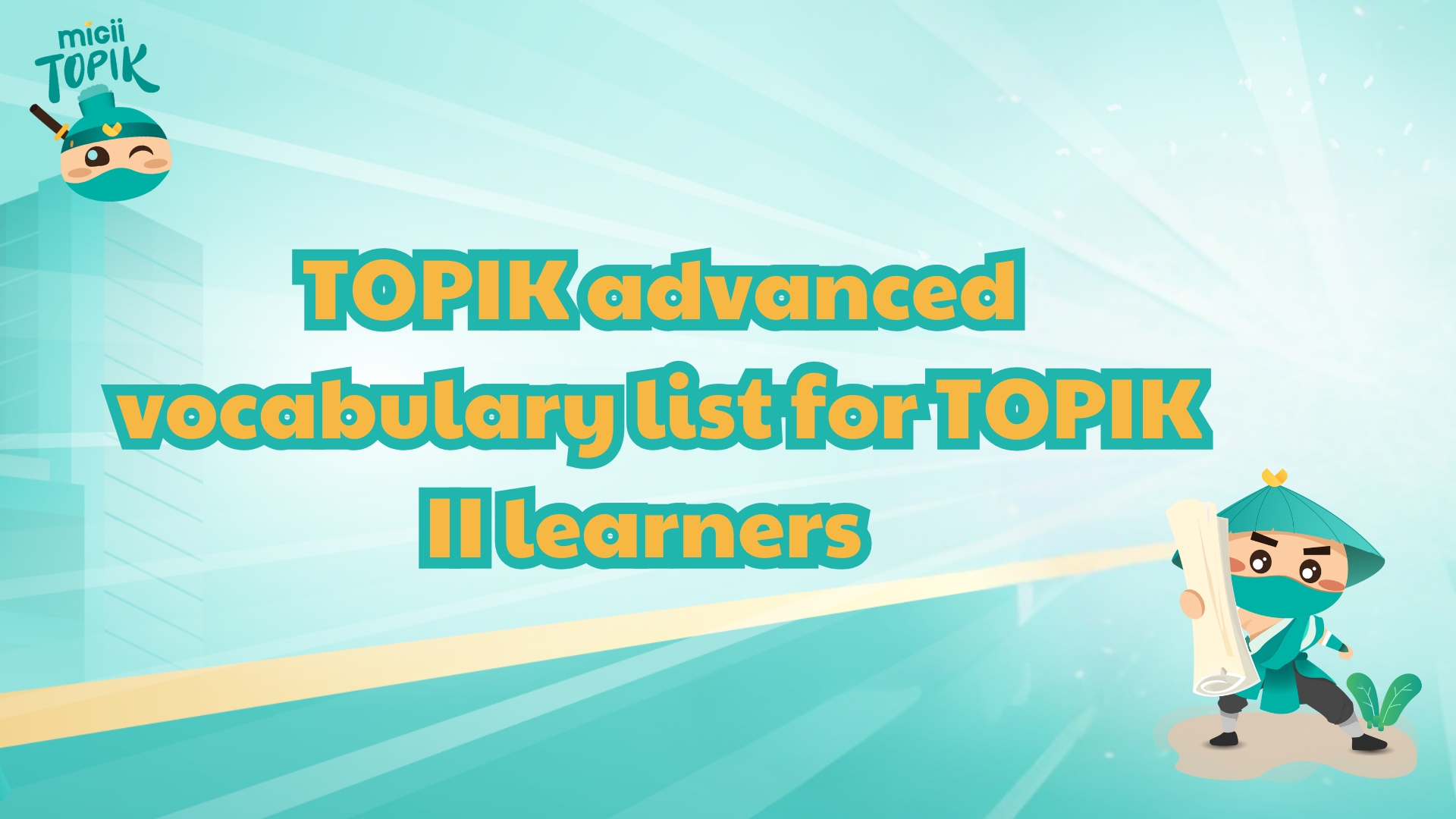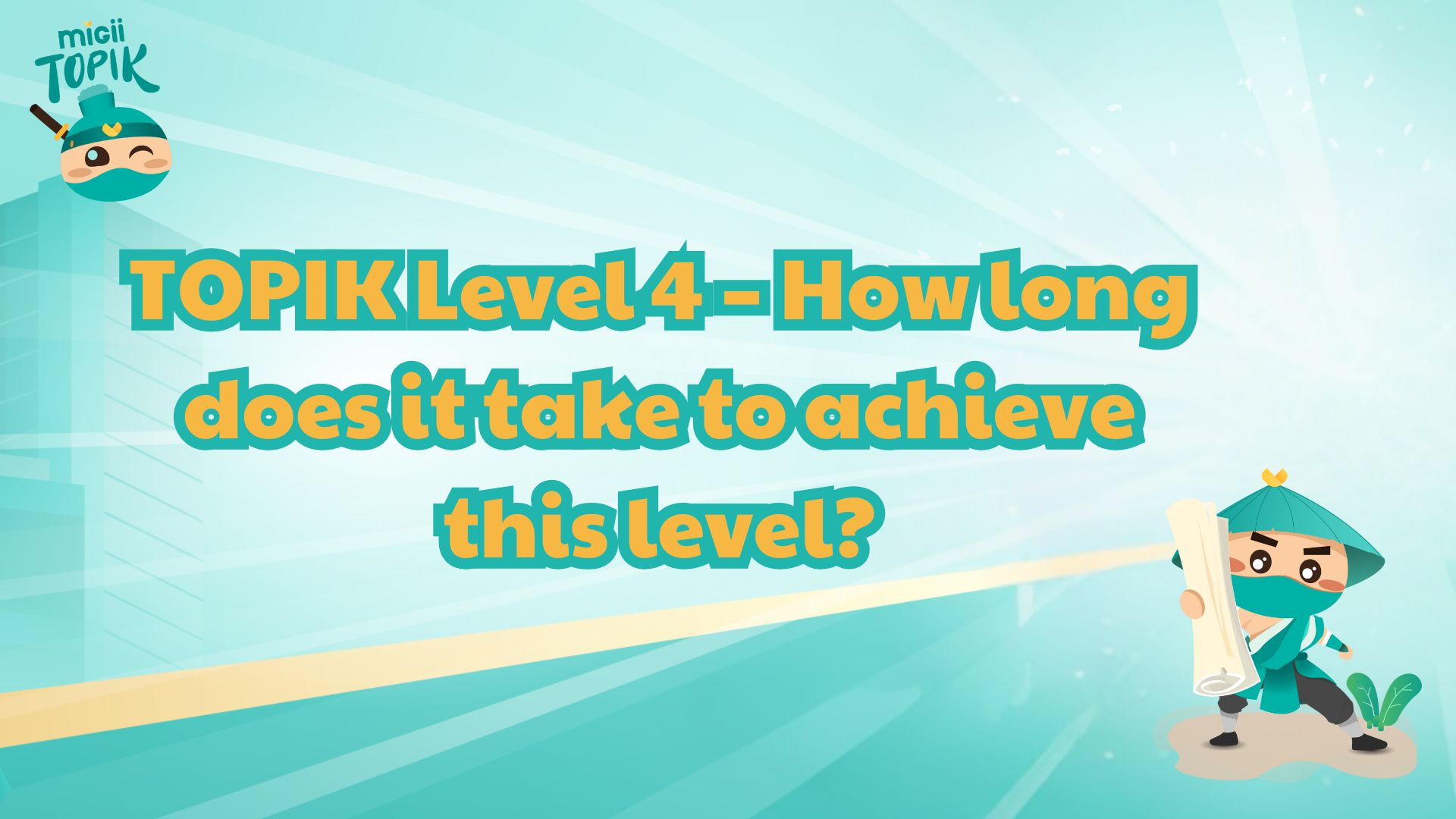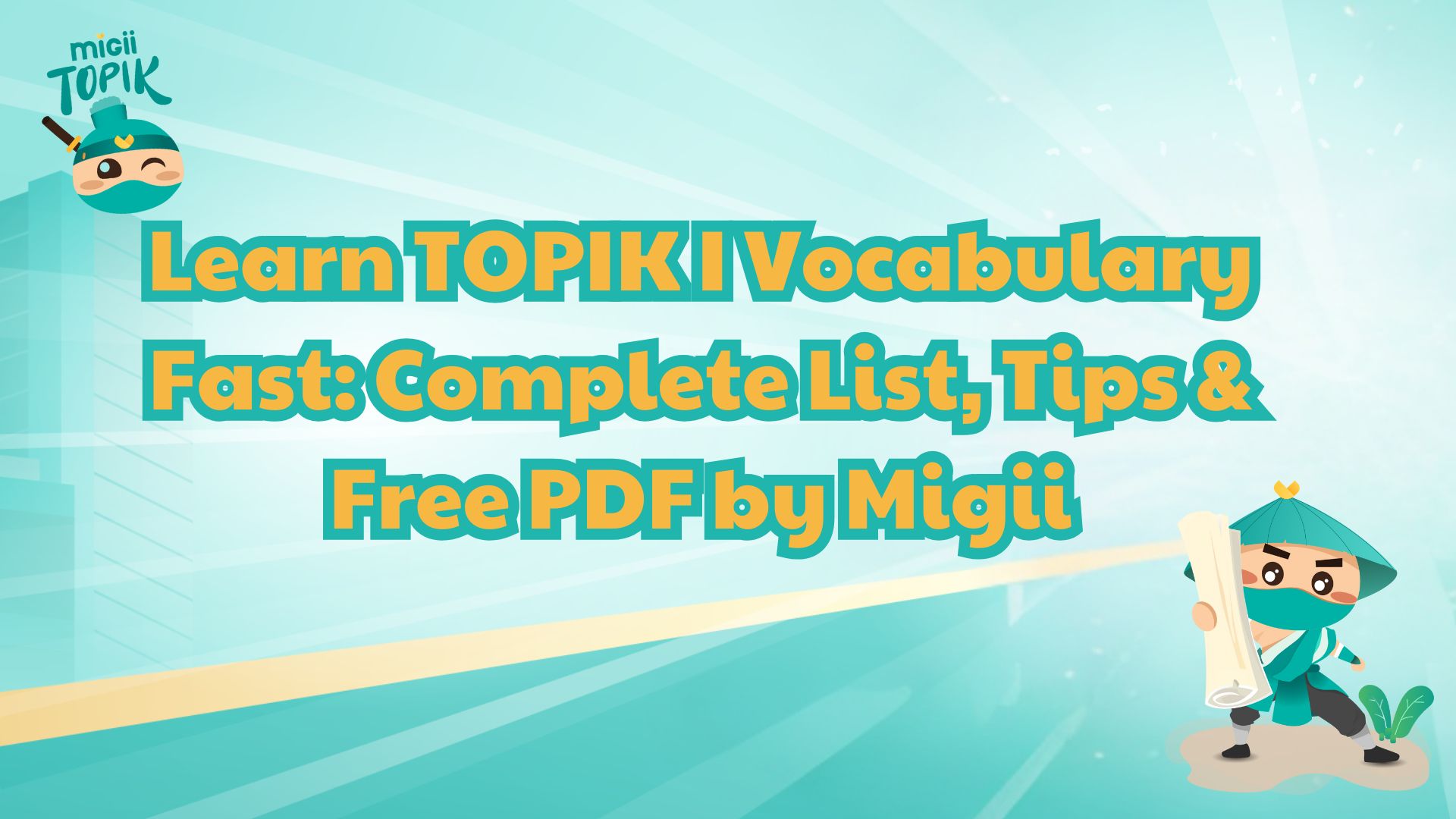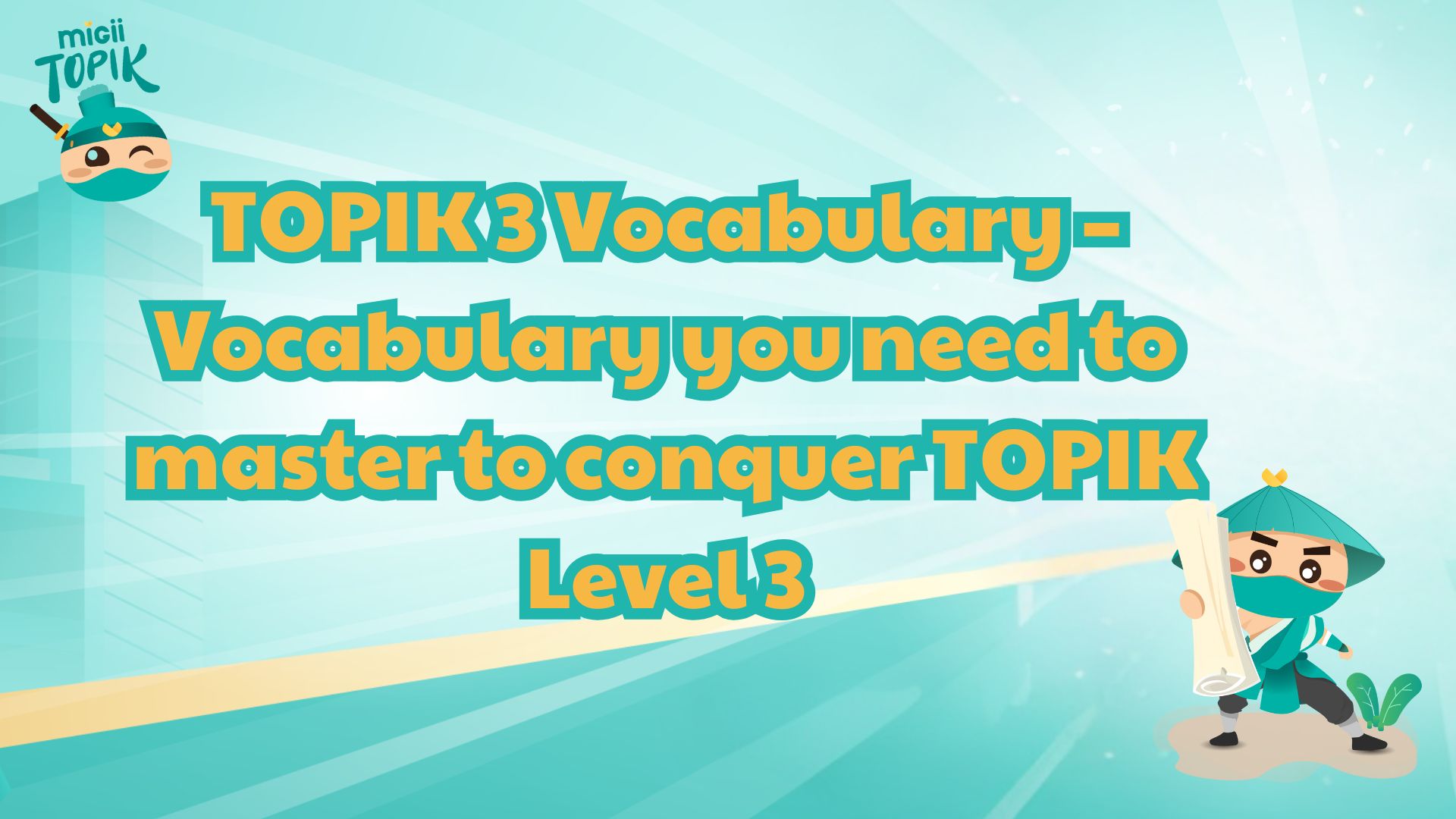TOPIK 5 vocabulary represents an advanced level of Korean proficiency, requiring learners to use academic, social, and professional terms accurately and flexibly. This article from Migii will guide you on how many words to learn, effective memorisation techniques, materials with Vietnamese and English meanings, and how to study directly on the Migii platform.
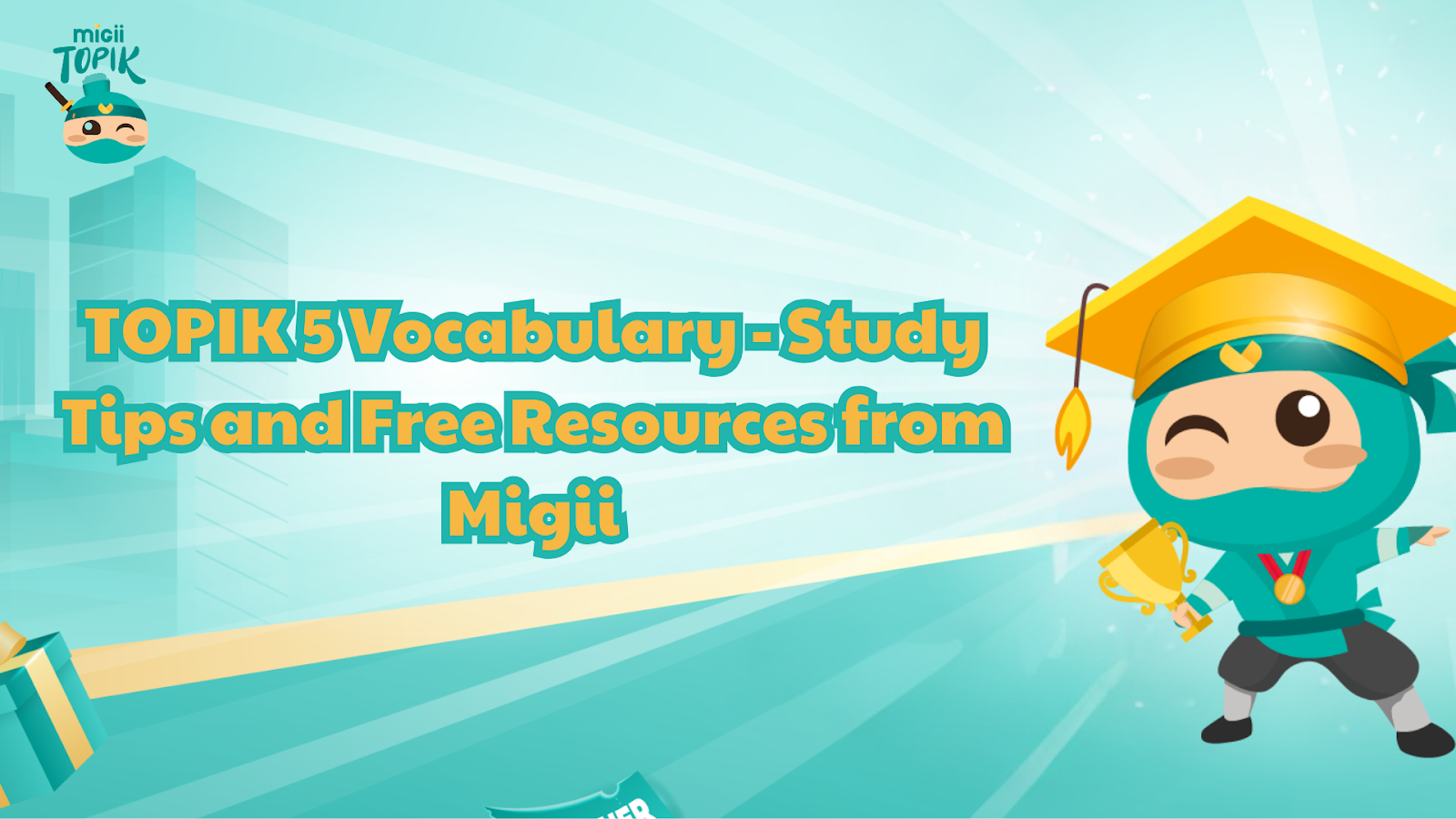
TOPIK 5 vocabulary
How many words do you need to know for TOPIK 5?
At level 5 of the Korean Proficiency Test (TOPIK), vocabulary plays a decisive role in determining whether you can read, analyse and express ideas naturally like a native speaker. According to the current test structure, learners should know about 3.000-4.000 words, including 1.500-2.000 advanced-level words that often appear in academic texts, news articles and complex social situations.
While intermediate learners only need to understand basic conversations and everyday expressions, TOPIK 5 vocabulary requires you to recognise meaning nuances, contextual usage, and flexible word variations. For example, both 생각하다 (to think) and 사고하다 (to reason) share a similar meaning, but 사고하다 is usually used in academic or formal writing, which demonstrates higher proficiency in language use.
Common vocabulary groups at this level include:
- Academic vocabulary: frequently used in topics such as society, education, politics, economy, and culture. Examples: 정책 (policy), 환경문제 (environmental issue), 고용률 (employment rate).
- Emotional and abstract words: used to express deeper feelings and opinions. Examples: 감동적이다 (touching), 비판적이다 (critical), 객관적이다 (objective).
- Specialised vocabulary: often found in reading and writing sections, such as 기후변화 (climate change), 산업화 (industrialisation), 자율성 (autonomy).
Learners who score high in the reading section of TOPIK 5 (읽기) are typically able to handle 800-1000-word passages, understand main ideas, and infer the meaning of unfamiliar words through context. This shows that mastering TOPIK level 5 vocabulary is not simply about memorising long word lists but about learning through themes and real-world examples.
In the writing section (쓰기), a rich vocabulary allows learners to express ideas more clearly and naturally. When presenting arguments, you should use connectors such as 따라서 (therefore), 게다가 (in addition), and 반면에 (on the other hand) to make your writing coherent and persuasive.
Achieving a strong command of TOPIK 5 vocabulary is not about rote memorisation. It is about understanding how words function in context and using them naturally. This is also the approach that Migii applies in its topic-based and context-driven learning system, helping learners remember words faster and use them effectively in both communication and the actual TOPIK exam.

The number of vocabulary words required for TOPIK level 5
How to learn TOPIK 5 vocabulary effectively
To reach TOPIK level 5, expanding your vocabulary isn’t just about memorising long word lists. It’s about developing smart, consistent study habits that help you understand and use those words naturally in real contexts.
Learn by topic (Thematic learning)
One of the most effective ways to help your brain memorise faster is to learn words by topic. When vocabulary items are related in meaning or used in similar situations, they are easier to connect and recall.
For example, when studying the topic “Education,” you can group words such as 학교 (school), 학생 (student), 교수 (professor), and 연구 (research) together. Learning in clusters like this helps you understand the relationships between words while saving revision time.
You can organise your TOPIK level 5 vocabulary list into topics like society, work, culture, economy or emotions. When reviewing, your brain will recognise patterns based on ideas rather than individual words, which strengthens memory and improves recall during reading or writing tasks.
A useful tip is to color-code each topic. For instance, blue for society, yellow for work and orange for emotions. This visual mapping technique makes learning more engaging and easier to follow.
Learn through context (Context-based learning)
Context is the key to moving from “knowing the meaning” to “knowing how to use it.” Instead of simply memorising lists, try to learn words through sentences, short passages, or real-life situations. This approach helps you grasp both the meaning and the proper usage of each word.
For example, rather than learning 결정하다 (to decide) in isolation, study it in the sentence:
“그는 유학을 가기로 결정했다.” (He decided to study abroad.)
Learning vocabulary in this way allows you to connect meaning with imagery, emotion, and situation, which makes it much easier to remember. Moreover, you can collect real sentences from movies, articles, or reading passages, since encountering words in authentic contexts not only deepens your understanding but also helps you respond more naturally and quickly when you see them again in the exam.
Use spaced repetition
The human brain tends to forget information quickly if it is not reviewed regularly. Studies on memory show that after one week, we forget up to 80% of new words unless we review them. That’s why following a fixed revision schedule is crucial.
You can apply the 1-3-7-14-day rule:
- Review the words the day after learning them.
- Review again after 3 days.
- Review once more after 1 week, and then after 2 weeks.
This spaced repetition method activates long-term memory and helps prevent natural forgetting. You can use a notebook, flashcards, or digital vocabulary tools with reminder features. Spending just 15-20 minutes a day, but doing it consistently, will allow you to memorise thousands of words without feeling overwhelmed.
Combine multiple skills (Integrated learning)
To truly master TOPIK 5 vocabulary, you shouldn’t rely solely on reading or rote memorisation. Integrating the four core skills (listening, speaking, reading, and writing) creates stronger neural connections and makes vocabulary more usable in real communication.
For each new word, you can:
- Listen to the correct pronunciation to internalise its sound and rhythm.
- Speak it out loud several times to build natural recall.
- Read articles or passages that include the word to see it in context.
- Write short sentences or paragraphs using the new word to reinforce memory.
When a word is repeated through multiple sensory channels, your brain treats it as part of your active language, not just as information to memorise. You can also describe your daily activities in Korean and intentionally include new words you’ve learnt. This technique helps turn vocabulary into an automatic reflex during both writing and speaking tasks.
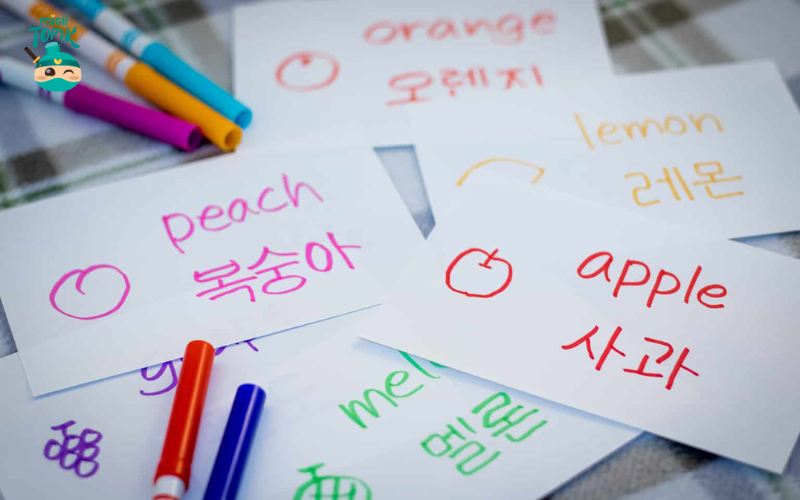
Effective ways to study TOPIK level 5 vocabulary
Download TOPIK 5 vocabulary PDF for free from Migii
If you are looking for a simple way to review essential words for TOPIK 5, Migii’s free vocabulary PDFs are a great starting point.
TOPIK 5 vocabulary PDF - Vietnamese version
This file contains more than 100 important words from the TOPIK 5 level together with their Vietnamese meanings. The list is presented in a clear and simple format so that learners can quickly review and remember new words.
The Vietnamese version is suitable for those who prefer understanding meanings in their native language and want a concise resource for quick review before the exam.
You can download it for free at:
TOPIK 5 vocabulary PDF - English version
This version includes more than 1.000 TOPIK 5 level vocabulary with their English equivalents. The layout consists of two columns, one for the Korean word and one for its meaning, making it easy to read and compare.
The English version is ideal for learners who want to study bilingually and get used to equivalent expressions in English.
You can download it for free at:
TOPIK 5 vocabulary PDF for free from Migii
Learning TOPIK level 5 vocabulary with the Migii platform
When preparing for TOPIK level 5, having a well-structured learning source is essential. The Migii platform offers learners not only vocabulary lists but also a complete learning journey, from theory to practice tests. This approach helps learners study TOPIK 5 vocabulary in an organised and effective way, instead of memorising random words without direction.
Korean learning materials on Migii
On Migii, learners can access a wide range of Korean study materials, including vocabulary, grammar, reading, listening, and practice tests for both TOPIK and EPS TOPIK. All content is categorised by levels from 1 to 6, allowing learners to easily choose the course that matches their current ability.
In the TOPIK 5 vocabulary section, lessons are organised with clear word lists, meanings, and example sentences. After each lesson, learners can take a short multiple-choice quiz to review the words and check their understanding.
Because the learning structure follows the official TOPIK format, Migii helps learners strengthen their vocabulary systematically instead of memorising words in isolation. You can explore the Korean learning materials at Migii to start your study today.
Vocabulary theory and practice for level 5
The vocabulary theory section for TOPIK level 5 on Migii is concise, clear and easy to follow. Each lesson includes a vocabulary list with meanings, along with practical example sentences to help learners understand how each word is used in context. After studying the theory, learners can complete a short quiz to test their memory. The system shows the correct and incorrect answers immediately, allowing learners to evaluate their progress.
This combination of theory and practice enables learners to build and review TOPIK 5 vocabulary within a single lesson, without needing additional tools. You can visit the TOPIK Vocabulary Theory section on Migii to explore the lessons in detail.
Practicing TOPIK and EPS TOPIK level 5 tests
After finishing the vocabulary section, learners can move on to the test practice area to apply what they have learnt. Migii provides official TOPIK and EPS TOPIK tests, helping users become familiar with the real exam structure and improve their reaction speed when facing advanced vocabulary questions. Each test includes listening, reading, and writing parts, allowing learners to practise specific skills or complete a full mock exam just like the real test.
Regularly practising with real test questions not only reinforces TOPIK 5 vocabulary but also helps learners recognise words quickly in context. You can start practising today in the EPS TOPIK Test Practice section on Migii to assess your current level and improve your exam skills.
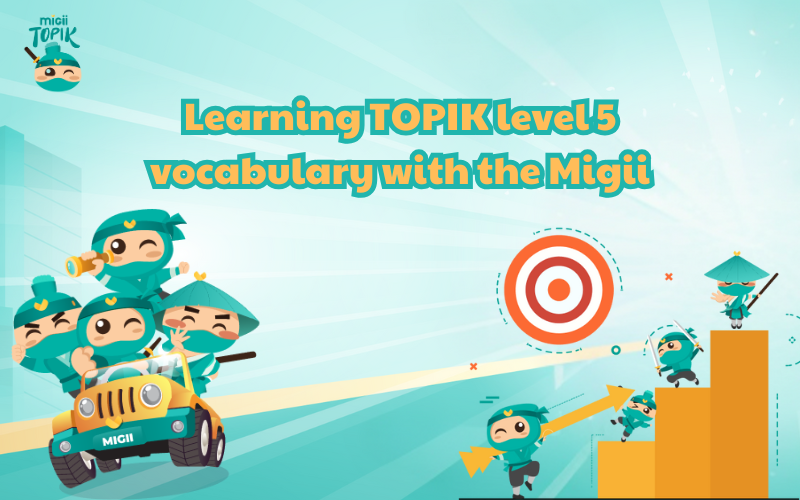
Study TOPIK level 5 vocabulary effectively with Migii
Conclusion
To achieve a high score in the TOPIK 5 exam, learners need to invest time in expanding their vocabulary and applying smart study methods. With the well-structured TOPIK 5 vocabulary list and intelligent learning tools from Migii, you can easily broaden your word bank, retain vocabulary faster and use it naturally in the test. Visit Migii today to start your confident journey toward conquering TOPIK 5.



